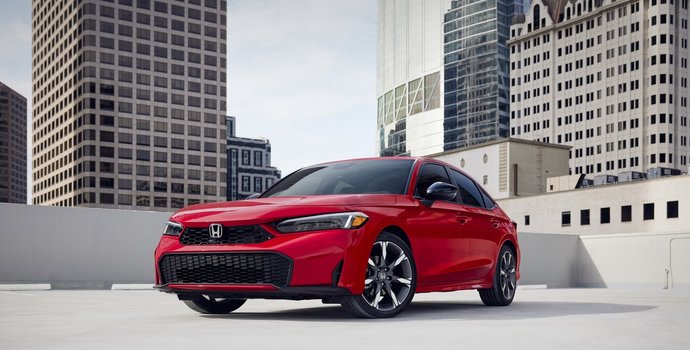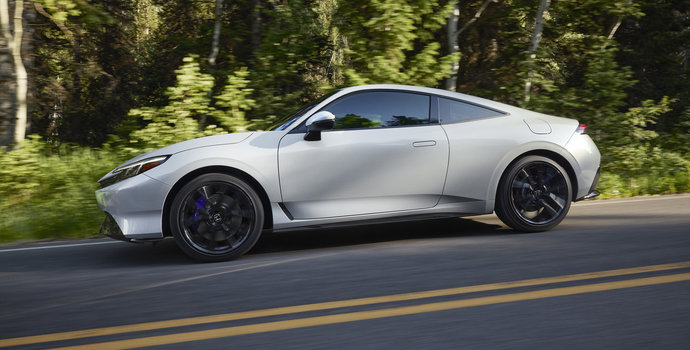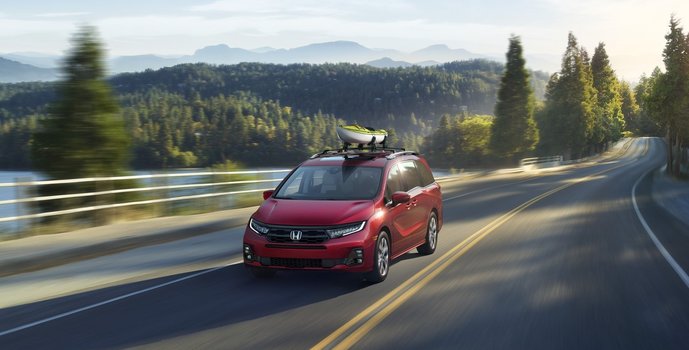Choosing the right Honda SUV for your family in Goderich means finding the right balance between fuel efficiency, space, and capability. Honda offers three strong options: the compact HR-V, the versatile CR-V, and the three-row Pilot. Each model serves a different purpose, and understanding their fuel economy can help you make a smart decision that fits your budget and lifestyle.
Explore the All-New Honda CR-V
From city streets to weekend getaways, the CR-V delivers the perfect balance of comfort, capability, and confidence. Experience Honda reliability in every drive.
Shop Honda CR-V >
With Ontario fuel prices averaging 126.3 cents per litre in October 2025, every litre counts. This comparison breaks down the real-world fuel economy across Honda's SUV lineup so you can see which model delivers the efficiency you need without sacrificing the space and features your family depends on.
At a Glance: Honda SUV Fuel Economy
|
Model
|
Combined (L/100 km)
|
Best For
|
|
2026 HR-V FWD
|
8.3
|
Solo commuters, urban drivers
|
|
2026 HR-V AWD
|
8.7
|
Year-round traction, light cargo
|
|
2026 CR-V Gas FWD
|
7.8
|
Budget-friendly mid-size option
|
|
2026 CR-V Gas AWD
|
8.4
|
All-weather capability
|
|
2026 CR-V Hybrid AWD
|
6.4–6.7
|
Maximum efficiency, mid-size space
|
|
2025 Pilot AWD
|
11.0–11.8
|
Three-row seating, towing capacity
|
HR-V: Efficiency-First Compact Crossover
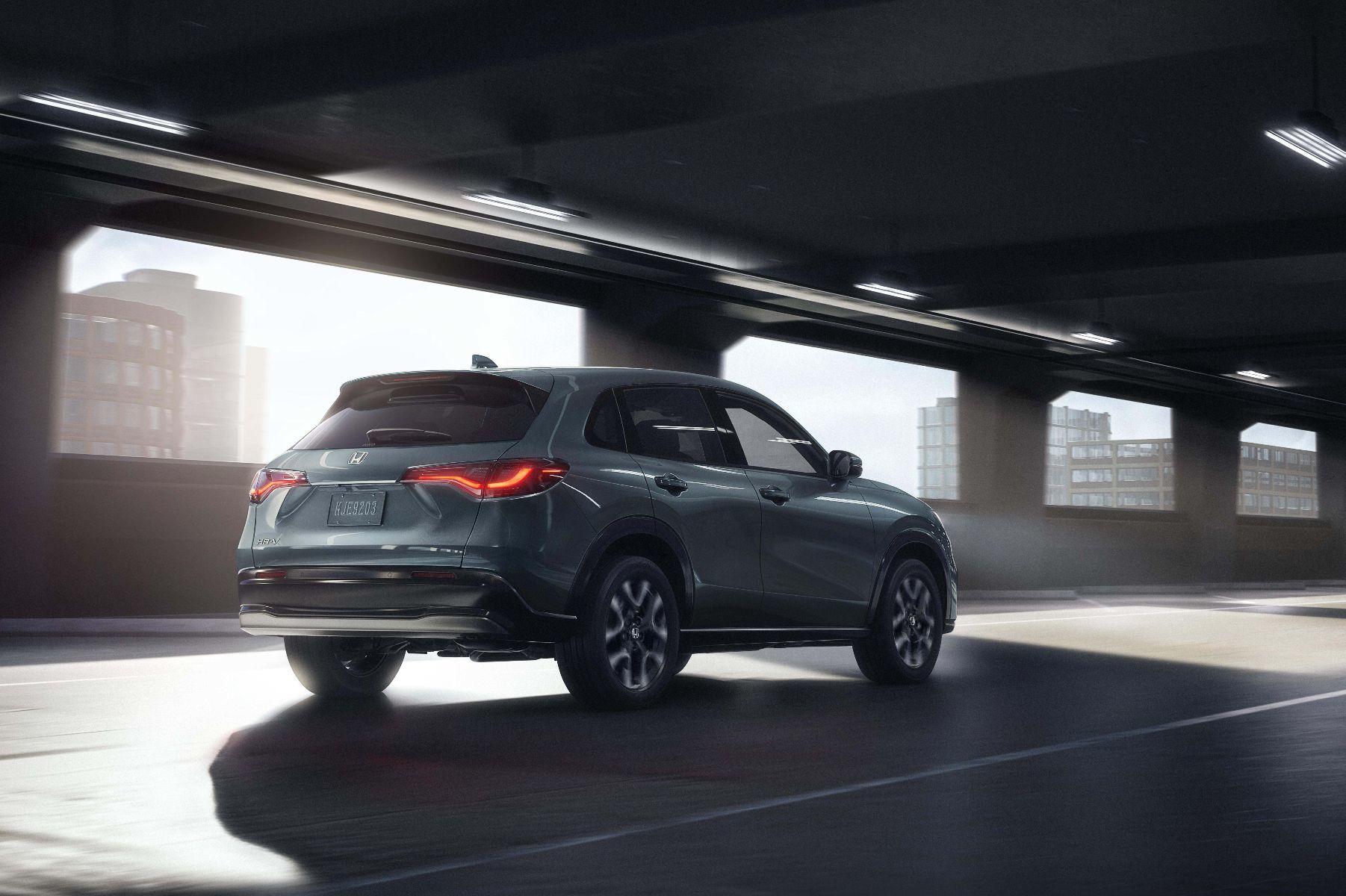
The 2026 Honda HR-V stands out as the most efficient gas-powered option in Honda's SUV lineup. With a 2.0 L 4-cylinder engine producing 158 hp and 138 lb-ft of torque, the HR-V delivers smooth performance while keeping fuel costs low.
Front-wheel drive HR-V models achieve 9.1 L/100 km in the city, 7.4 L/100 km on the highway, and 8.3 L/100 km combined. If you add Real Time All-Wheel Drive with Intelligent Control for better traction in Ontario winters, those numbers shift slightly to 9.5/7.8/8.7 L/100 km.
The HR-V works well for singles, couples, or small families who prioritize easy parking, low fuel costs, and enough cargo space for weekend getaways. With 691 litres of cargo space behind the second row and 1,559 litres with the seats folded, the HR-V handles daily errands and road trips without breaking the bank at the pump.
Key HR-V Fuel Economy Points:
- Front-wheel drive achieves the best efficiency in Honda's gas SUV lineup
- Real Time AWD adds minimal fuel consumption for year-round confidence
- Compact size makes it ideal for city driving and tight parking spaces
- 53-litre fuel tank provides solid range between fill-ups
CR-V: The All-Around Balance
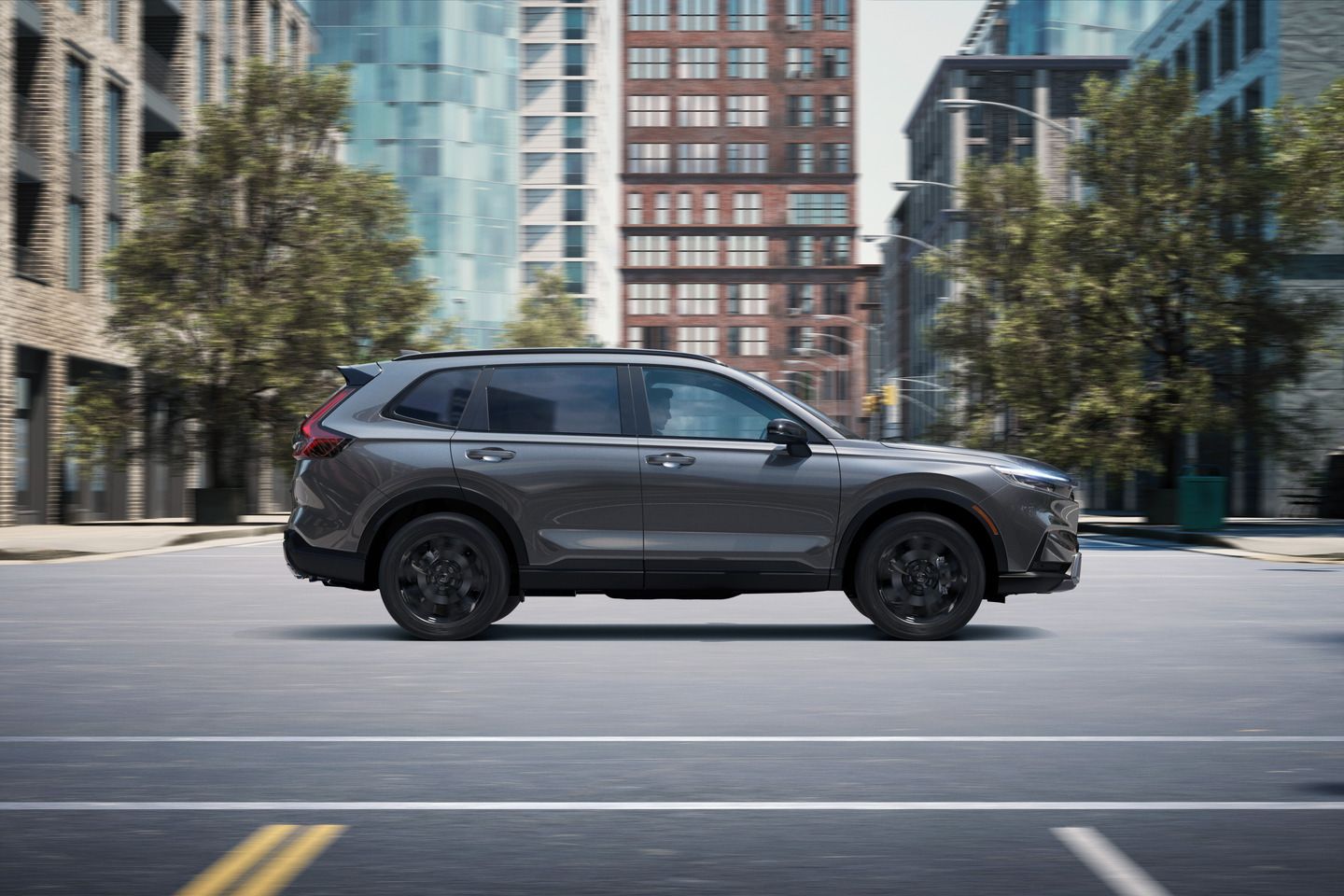
The 2026 Honda CR-V offers two powertrain choices: a turbocharged gas engine and an advanced hybrid system. Both deliver strong performance, but they serve different priorities.
CR-V Gas Engine
The gas-powered CR-V uses a 1.5 L turbocharged 4-cylinder engine with 190 hp and 179 lb-ft of torque. Front-wheel drive models achieve 8.4 L/100 km city, 7.1 L/100 km highway, and 7.8 L/100 km combined. Add Real Time AWD and those figures adjust to 9.1/7.6/8.4 L/100 km.
The gas CR-V costs less upfront than the hybrid and still delivers respectable fuel economy for a mid-size SUV. With 1,113 litres of cargo space behind the second row and 2,166 litres with the seats folded, it provides more room than the HR-V while maintaining manageable fuel costs.
CR-V Hybrid: Maximum Efficiency
The CR-V Hybrid uses Honda's fourth-generation two-motor hybrid system, combining a 2.0 L 4-cylinder engine with two electric motors for 204 hp combined and 247 lb-ft of torque. This powertrain delivers the best fuel economy in the entire Honda SUV lineup.
CR-V Hybrid models achieve between 6.0 and 6.3 L/100 km in the city, 6.9 to 7.2 L/100 km on the highway, and 6.4 to 6.7 L/100 km combined, depending on the trim. The new TrailSport Hybrid uses all-terrain tires and slightly different gearing, which accounts for the small variation in efficiency across trims.
For Ontario drivers covering significant highway miles or managing long commutes, the CR-V Hybrid delivers fuel savings that quickly offset its higher purchase price. The hybrid system also provides strong low-end torque, making highway merging and passing effortless.
Key CR-V Fuel Economy Points:
- Hybrid models achieve the best fuel economy in Honda's SUV range
- Gas models offer lower upfront cost with solid efficiency
- Both powertrains deliver mid-size space and capability
- Cargo volume slightly reduced in hybrid trims (1,028 litres vs. 1,113 litres) due to battery placement
Pilot: Three-Row Family Utility

The 2025 Honda Pilot uses a 3.5 L V6 engine with 285 hp and 262 lb-ft of torque. This larger engine powers the Pilot's three-row seating, 2,268 kg towing capacity, and standard Intelligent Variable Torque Management AWD system.
Fuel economy varies slightly by trim. The Sport and EX-L trims achieve 12.4 L/100 km city, 9.3 L/100 km highway, and 11.0 L/100 km combined. The TrailSport trim, equipped with all-terrain tires and higher ground clearance, uses 13.2/10.1/11.8 L/100 km. The Touring and Black Edition trims fall in between at 12.7/9.4/11.2 L/100 km.
These numbers reflect the Pilot's size and capability. With seating for up to eight passengers, 635 litres of cargo space behind the third row, and serious towing capacity, the Pilot serves families who need more space and versatility than smaller SUVs can offer.
Key Pilot Fuel Economy Points:
- V6 engine delivers power for towing and three-row hauling
- Fuel economy reflects the Pilot's size and capability
- All models include AWD for confident handling in all conditions
- 70-litre fuel tank provides extended range for long trips
Fuel Cost Comparison
With Ontario fuel averaging 126.3 cents per litre in October 2025, here's what you can expect to spend over 20,000 km of annual driving:
|
Model
|
Combined (L/100 km)
|
Annual Fuel Cost
|
|
HR-V FWD
|
8.3
|
$2,097
|
|
HR-V AWD
|
8.7
|
$2,197
|
|
CR-V Gas FWD
|
7.8
|
$1,970
|
|
CR-V Gas AWD
|
8.4
|
$2,121
|
|
CR-V Hybrid AWD
|
6.4
|
$1,616
|
|
Pilot AWD (Sport/EX-L)
|
11.0
|
$2,779
|
|
Pilot AWD (TrailSport)
|
11.8
|
$2,981
|
These figures assume combined city and highway driving. Your actual costs will vary based on your driving habits, local fuel prices, and the specific trim you choose.
Which Honda SUV is Right for You?
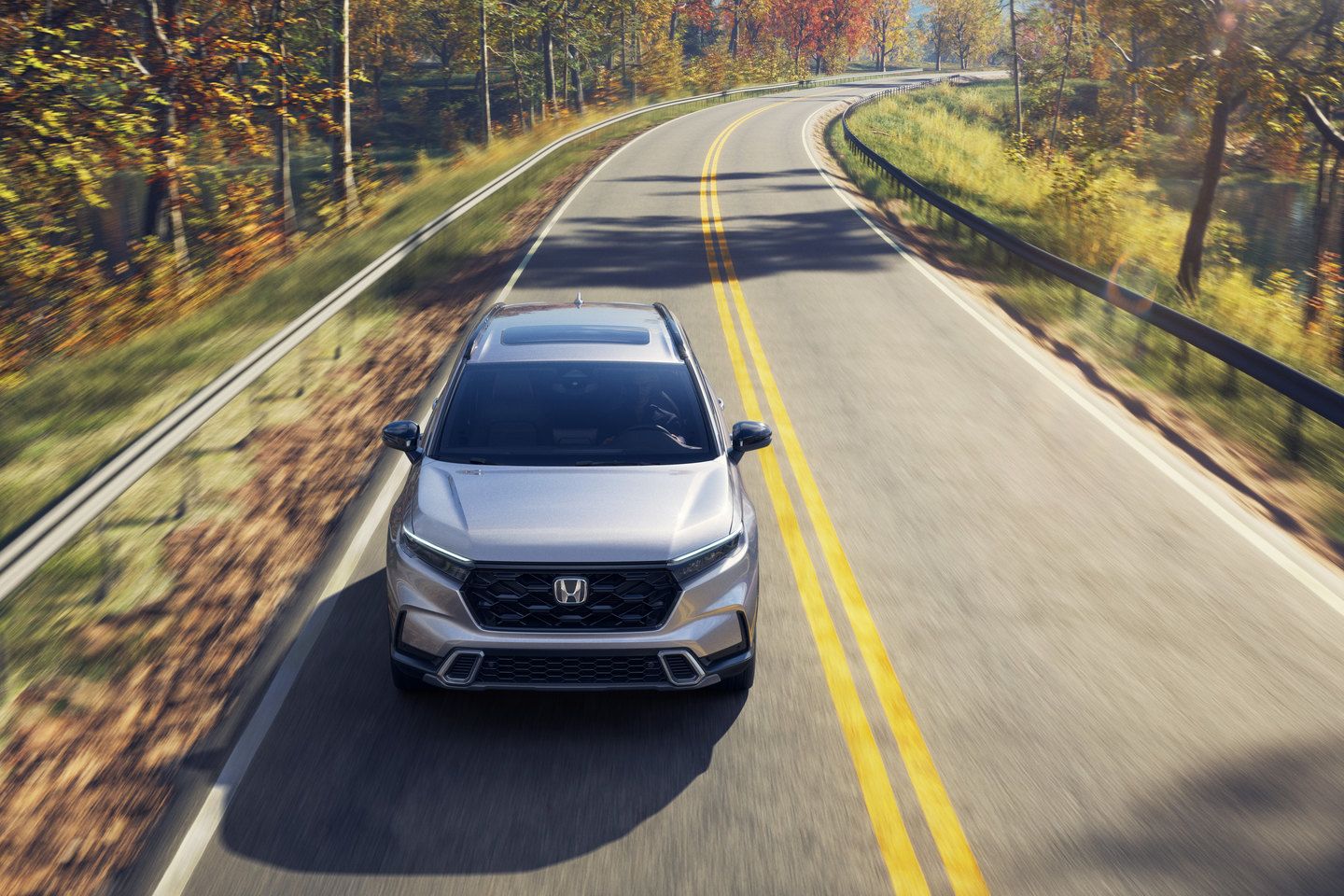
Choose the HR-V if:
- You drive primarily in the city or suburbs
- You prioritize low fuel costs and easy parking
- You need enough space for two adults and occasional passengers
- You want the lowest monthly fuel bill in Honda's SUV lineup
Choose the CR-V Gas if:
- You need mid-size space without hybrid complexity
- You want a lower purchase price with good fuel economy
- You cover mixed city and highway driving
- You need more cargo room than the HR-V offers
Choose the CR-V Hybrid if:
- You drive long distances regularly
- You want the best fuel economy Honda offers in an SUV
- You're willing to pay more upfront for long-term savings
- You need mid-size space with maximum efficiency
Choose the Pilot if:
- You regularly carry more than five passengers
- You need three rows of seating for carpools or family trips
- You tow boats, trailers, or campers
- You prioritize space and capability over fuel economy
Experience Honda's SUV Lineup at Goderich Honda
Fuel economy matters, but the right SUV depends on how you use it. The HR-V, CR-V, and Pilot each serve different needs, and the best choice for you depends on your daily routine, family size, and budget.
Our team at Goderich Honda can walk you through real-world fuel costs, trim-level differences, and financing options that fit your situation. We'll help you compare models side-by-side and answer questions about hybrid technology, AWD systems, and long-term ownership costs.
Book your test drive today at our Goderich dealership and see which Honda SUV fits your Ontario lifestyle.
You might also be interested in these blogs:







